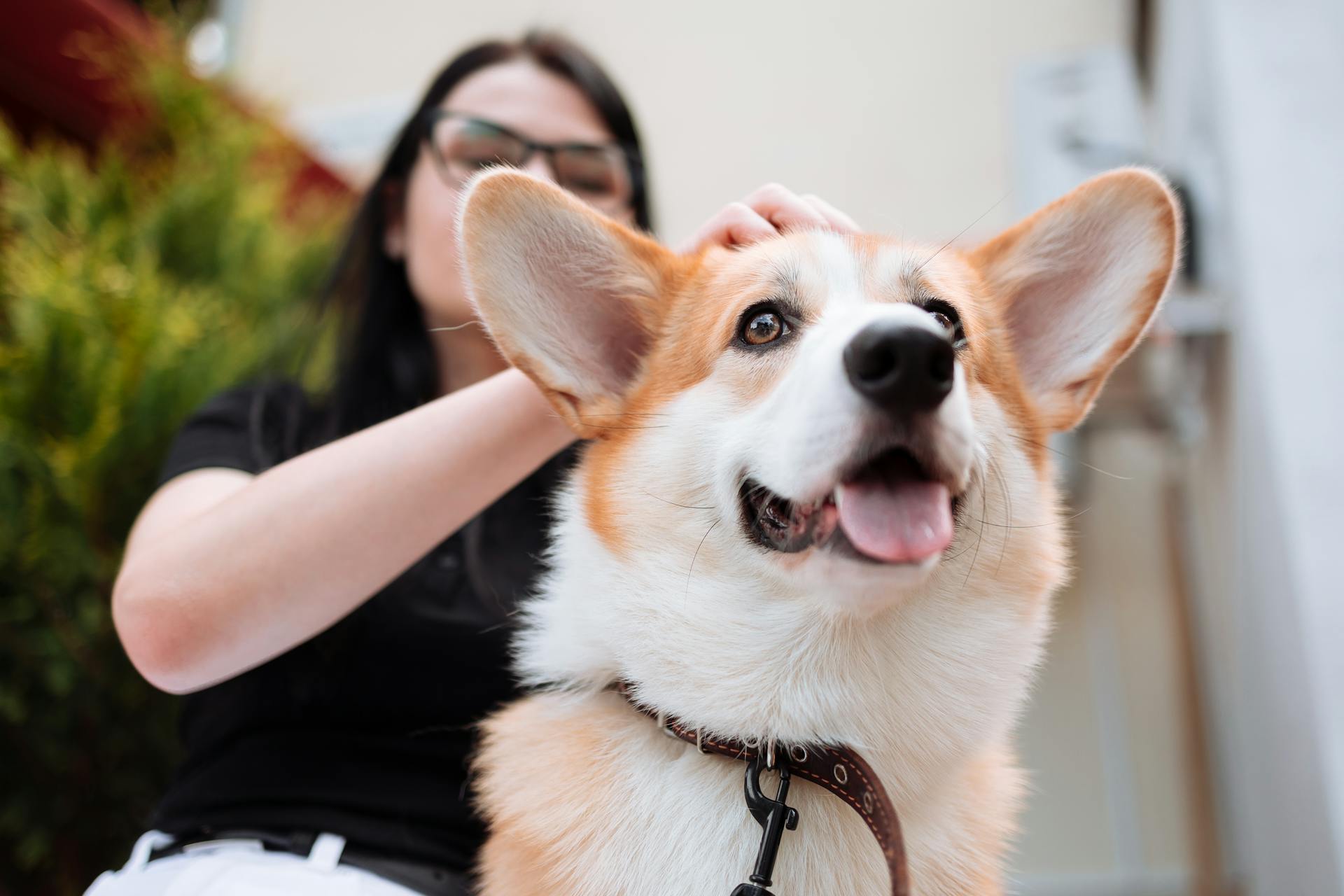
A bird's tail feathers will almost always grow back, given enough time. The rate of growth will vary, depending on the species of bird, but it is generally quite fast. If a bird loses its tail feathers suddenly, it may take a little longer for them to grow back in, but if the bird loses them gradually, they will usually grow back in much faster. There are a few exceptions to this rule, but for the most part, if a bird loses its tail feathers, they will grow back.
How long does it take for a bird's tail feathers to grow back?
A bird's tail feathers can take up to six weeks to grow back, depending on the bird species. In some cases, a new tail feather may grow in as little as two weeks. However, if a bird is molting (shedding its feathers), it may take longer for new tail feathers to grow in.
What factors influence the rate of tail feather growth in birds?
Tail feathers are some of the most important feathers on a bird. They provide stability in flight, and are also used in courtship and communication. The rate of tail feather growth can be influenced by a variety of factors, including the species of bird, the time of year, diet, and health.
One of the most important factors affecting the rate of tail feather growth is the species of bird. Different species of birds grow their tail feathers at different rates. For example, finches and canaries grow their tail feathers much faster than do hawks and eagles. This is due to differences in the way the feathers are structured and the amount of blood flow to the area.
The time of year also affects the rate of tail feather growth. In the spring, when birds are getting ready to mate, they grow their tail feathers much faster than at any other time of year. This is because the tail feathers are used in courtship displays, and the males need to have long, beautiful tails to impress the females.
Diet is another important factor that influences the rate of tail feather growth. Birds that eat a lot of protein will grow their feathers faster than those that do not. This is because protein is essential for feather growth. Birds that are not getting enough protein in their diet will have stunted feather growth.
Finally, health is a factor that can influence the rate of tail feather growth. Birds that are sick or injured will often have slower feather growth than healthy birds. This is because the body is redirecting its resources to healing, rather than to growing feathers.
All of these factors - species, time of year, diet, and health - play a role in determining the rate of tail feather growth in birds. By understanding these factors, we can better understand why birds have the tail feather growth rates that they do.
Suggestion: Bird Feather
How does the loss of tail feathers affect a bird's ability to fly?
The loss of tail feathers can have a significant impact on a bird's ability to fly. When a bird loses a tail feather, the center of gravity of the bird shifts and the bird becomes less aerodynamic. This can make it more difficult for the bird to take off and maintain altitude. In addition, the loss of tail feathers can adversely affect the bird's balance, making it more difficult to maneuver in flight.
How does the loss of tail feathers affect a bird's appearance?
Prey animals have many predators to survive against. To escape being preyed on, they have to be able to outrun, outwit or outmaneuver their predators. One way they do this is by having a long tail.
The long tail provides balance and stability while the bird is flying. It also helps the bird change direction quickly and fly in a zigzag pattern to escape predators. The long tail also makes the bird look bigger to predators, which can intimidate them and make them think twice about attacking.
However, when a bird loses its tail feathers, it loses all of these benefits. The bird's appearance changes drastically and it becomes much more vulnerable to predators.
A bird without tail feathers can't fly as well and is more likely to be caught by a predator. The bird also can't change direction as quickly, making it easier for the predator to catch up.
The loss of tail feathers can happen for many reasons. The feathers can be removed by a predator, they can be plucked out by the bird itself, or they can fall out due to stress or illness.
Whatever the cause, the loss of tail feathers is a serious problem for birds. It makes them more vulnerable to predators and can lead to their death.
For more insights, see: Birds Fly
How does the loss of tail feathers affect a bird's mating prospects?
Losing tail feathers can have a significant impact on a bird's mating prospects. Tail feathers are used for balance and manoeuvrability when flying, and are also used to attract mates. A bird with missing or damaged tail feathers is likely to have difficulty flying and therefore have reduced mating prospects. In some cases, tail feathers may be regrown, but this takes time and energy that could be spent on other activities, such as feeding or nesting. In some species, tail feathers are brightly coloured and used in display behaviours to attract mates; a bird with dull or missing tail feathers may be less visible to potential mates and therefore have reduced mating prospects. In conclusion, the loss of tail feathers can have a negative impact on a bird's mating prospects.
For another approach, see: What Type of Brush Should Be Used to Brush the Horse's Tail?
How does the loss of tail feathers affect a bird's social status?
In many bird species, the males have brighter plumage and/or more elaborate tails than the females. The tail is used primarily for balance during flight, but it also plays an important role in communication and social interactions. The tail feathers are usually shed and regrown annually, but sometimes birds will lose their tail feathers prematurely due to injury or disease.
When a bird loses its tail feathers, it can significantly affect its social status. In some species, the male birds use their tails to impress females and establish their dominance over other males. If a male bird loses its tail feathers, it may no longer be able to attract mates or compete for dominance. In other species, the tail feathers play a role in group cohesion and social bonding. Losing tail feathers can make a bird feel isolated and alone, and it may have difficulty rejoining its flock.
Tail feathers are also an important part of a bird's visual appearance, and many birds use them to communicate their emotional state. A bird with ruffled or missing tail feathers may look anxious or nervous, and this can trigger a negative response in other birds. In some cases, birds with damaged tail feathers may be bullied or ridiculed by other birds.
The loss of tail feathers can have a significant impact on a bird's social status, and it can be difficult for birds to regain their former status once they have lost their tail feathers.
For more insights, see: Do Corgis Have Long Tails
How does the loss of tail feathers affect a bird's ability to thermoregulate?
Birds are endothermic, meaning that they produce their own heat to maintain their internal body temperature. Their metabolism and body temperature is about 10 times higher than that of similar sized mammals. The feathers on a bird's body play a critical role in insulating their body heat as well as help to reduce heat loss from evaporative cooling. The loss of feathers, especially from the tail, can significantly impact a bird's ability to thermoregulate and maintain their internal body temperature.
The loss of tail feathers can cause a increase in heat loss from a bird's body due to the lack of insulation. Without the feathers to trap in heat, the bird must rely on other mechanisms to maintain their internal body temperature. The bird may increase their metabolism in order to generate more heat or they may spend more time roosting in order to conserve heat. The loss of tail feathers can also impact a bird's ability to fly. The tail feathers provide balance and stability when flying and without them, the bird may have difficulty flying or may not be able to fly at all. This can impact the bird's ability to escape predators or to find food.
The loss of tail feathers is a serious problem for birds and can have a significant impact on their ability to thermoregulate and to survive in the wild.
How does the loss of tail feathers affect a bird's ability to defend itself?
Loss of tail feathers affects a bird's ability to defend itself in several ways. First, it can make the bird less maneuverable, and therefore more vulnerable to predators. Second, it can make the bird less able to take off and escape danger. Third, it can make the bird more likely to be injured in a fall. Fourth, it can make the bird more susceptible to cold weather, as the feathers help to insulate the body. Finally, it can make the bird less able to attract mates, as the tail feathers are often used in courtship displays.
How does the loss of tail feathers affect a bird's ability to forage?
How does the loss of tail feathers affect a bird's ability to forage?
Birds rely on their tail feathers for a number of key purposes, including balance, steering, and braking while in flight. In addition, many birds use their tails as part of their elaborate mating displays. Birds that have lost their tail feathers due to predation or other causes often have difficulty foraging for food.
Without their tail feathers, birds have difficulty controlling their flight, making it more difficult to land on branches and other perches. In addition, they may have trouble taking off from the ground, especially in areas with dense vegetation. Consequently, birds that have lost their tail feathers often have to resort to foraging on the ground, where they are more vulnerable to predators.
The loss of tail feathers can also affect a bird's mating display. Many male birds use their tails to attract mates, and females often use tail feathers as part of their nesting material. If a bird has lost its tail feathers, it may be less likely to find a mate.
In addition to the direct effects of the loss of tail feathers, birds may also suffer from malnutrition and dehydration if they are unable to forage effectively. Birds rely on their tail feathers for balance and steering while in flight, and without these feathers, they may have difficulty locating food sources. If a bird is unable to find food, it may become dehydrated and malnourished, which can lead to serious health problems.
The loss of tail feathers can have a significant impact on a bird's ability to forage. Birds that have lost their tail feathers often have difficulty controlling their flight, making it more difficult to land on branches and other perches. In addition, they may have trouble taking off from the ground, especially in areas with dense vegetation. Consequently, birds that have lost their tail feathers often have to resort to foraging on the ground, where they are more vulnerable to predators. The loss of tail feathers can also affect a bird's mating display. Many male birds use their tails to attract mates, and females often use tail feathers as part of their nesting material. If a bird has lost its tail feathers, it may be less likely to find a mate. In addition to the direct effects of the loss of tail feathers, birds may also suffer from malnutrition and dehydration if they are unable to forage effectively.
Expand your knowledge: How to Keep Birds off My Mailbox?
Frequently Asked Questions
Why do birds have feathers on their body?
Birds’ feathers are essential for flight. When a bird takes off in the air, its feathers help it stay airborne. The feathers also keep the bird warm and protect it from rain and wind.
Can a bird survive without a tail?
Some bird species can survive without a tail, while other bird species lose their tail feathers as they mature.
How do birds fly without tail feathers?
There are several methods that birds use to fly without tail feathers. One method is called "flight with tail feathers." In this mode, the entire tail of the bird is used to help provide stability and balance while in flight. Other birds, such as albatrosses, use a technique called "simplified flight," which eliminates most of the tail plumage altogether. Some theories suggest that these different methods evolved because they offer different benefits for the birds.
Is it OK to cut a birds long tail feathers?
Obviously, no! If you want to trim your birds tail feathers, make sure to do it close to the base so that they don't fall off. You can also pluck them if necessary.
How long does it take for feathers to regrow after molt?
That is a difficult question to answer because the time it takes for feathers to regrow after a molt varies from bird to bird. Some birds may take around 12 months, while other species may take up to six months.
Sources
- https://seekforpet.com/do-birds-tail-feathers-grow-back/
- https://www.allaboutparrots.com/how-long-does-it-take-for-a-parrots-clipped-wings-to-grow-back/
- https://crittercleanout.com/what-happens-when-a-bird-loses-its-tail-feathers/
- https://birdsbeast.com/do-birds-tail-feathers-grow-back/
- https://pubmed.ncbi.nlm.nih.gov/31637118/
- https://www.cambridge.org/core/services/aop-cambridge-core/content/view/S0043933904000066
- https://forums.avianavenue.com/index.php
- https://careforparrots.com/do-birds-tail-feathers-grow-back/
- https://seekforpet.com/will-a-birds-tail-feathers-grow-back/
- https://www.pigeons.biz/threads/when-do-tail-feathers-grow-back.14640/
- https://www.semanticscholar.org/paper/Differences-in-tail-feather-growth-rate-in-breeding-Ausems-Wojczulanis-Jakubas/5e658472d33a8c90c4ddfacd45e2281c5d2f51ac
- https://birdsofthewild.com/will-a-birds-feathers-grow-back/
- https://onlinelibrary.wiley.com/doi/10.1111/jav.02894
- https://teacherscollegesj.org/how-long-does-it-take-for-a-bird-to-grow-tail-feathers/
Featured Images: pexels.com


